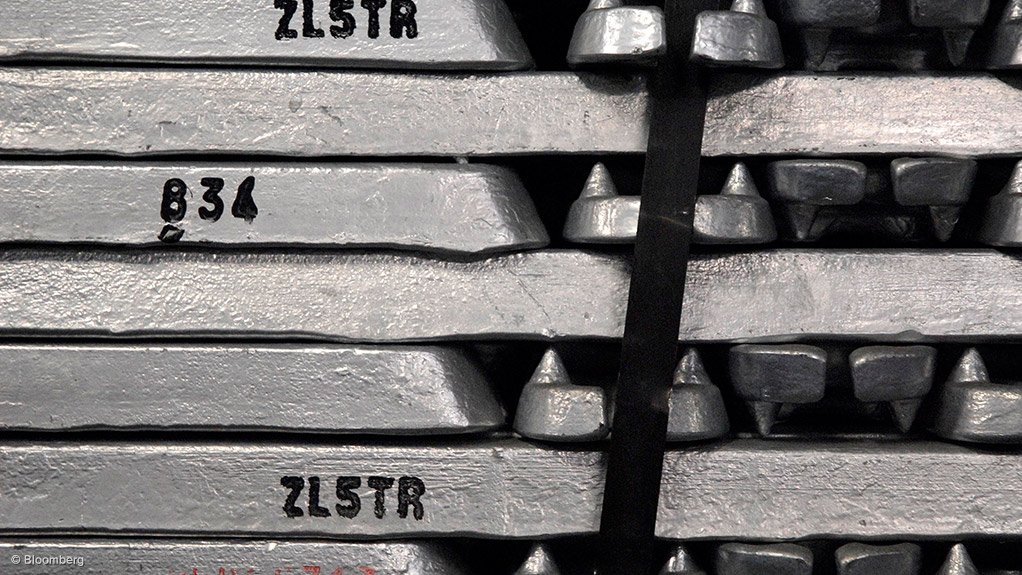
Photo by: Bloomberg
TORONTO (miningweekly.com) – Zinc prices have fallen to five-year lows as slowing demand from the biggest user China and rising inventories have softened the base metal’s market.
Zinc for delivery in three months on the London Metal Exchange (LME) had pared by as much as $47 to $1 637/t, the lowest level since June 2010.
The base metal, used to rustproof steel, had outperformed in the base metals space until early this summer, when prices crashed.
Bank of America (BofA) Merrill Lynch Global Research on Tuesday said this sharp correction was influenced by a confluence of factors, including subdued global demand growth and record refined output in China.
Yet, steady deliveries of metal into the LME warehouses had perhaps been the most bearish dynamic, the banking group noted in a new report.
“Given Glencore's recent acknowledgement of reducing inventories, we believe the company is responsible for at least some of the zinc that has shown up on LME. Making a few assumptions, including Glencore usually holding around 10% of trading revenues in inventories, we believe the company may have held around 350 000 t of zinc stocks, close to the increases of LME stocks of around 239 000 t gross, or 149 000 t net since June 1.
“In short, while more unreported stocks may become visible, there is scope for the relentless inflows to gradually subside,” BofA noted.
Meanwhile, LME warehouses had seen “unusual” record deliveries of zinc during the summer months. BofA advised that should stocks stabilise, it believed that zinc could increasingly resume trading on underlying fundamentals. Despite global demand growth not being strong, it had generally held up, reflected in global galvanised steel output expanding by 0.1% year-on-year in the second quarter, led by China, where output was up 8% year-on-year so far this year. However, some of that steel was exported, which affected mills in the rest of the world, excluding China.
Further, BofA analysts noted that the relatively subdued global demand for zinc had made the supply-side dynamics even more important. So far, mine output and high concentrate inventories had not constrained refined output in contrast to expectations that mine closures and the lack of projects in the pipeline would push zinc into structural, multiyear deficits.
Ample global mine supplies had enabled China's smelters to boost refined output to record levels, in turn, reducing the country's refined imports. Treatment charges remained in BofA’s view the single most important indicator for concentrates availabilities and the report noted that terms measured in US dollars had stabilised at higher levels, after rising persistently for the past three years.
“This suggests some tightening on concentrates markets. We also note strong anecdotal evidence that Chinese mines have curtailed output partially because of lower prices, suggesting that typical automatic stabilisers have started kicking in,” BofA said.
Nevertheless, zinc continued to face headwinds. A slowdown in shipments of unreported to reported stocks and mine production curtailment could ultimately help stabilise prices. Yet, for sustained rallies, tighter concentrates markets, mirrored also by a decisive decline in treatment charges, were necessary, which had up to now played out only tentatively.